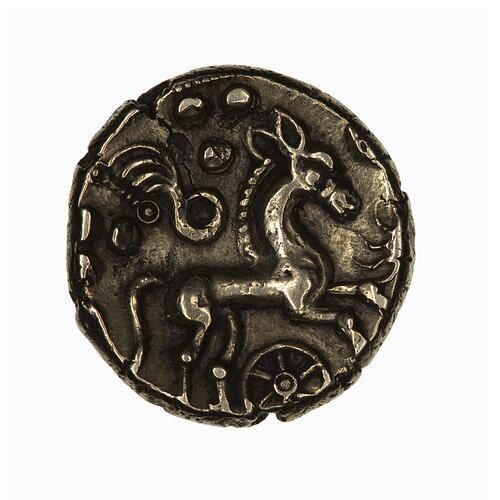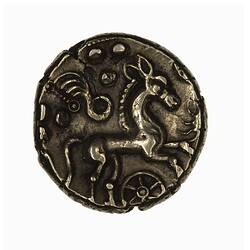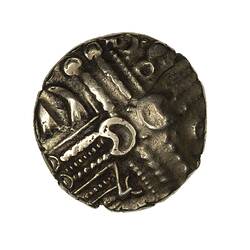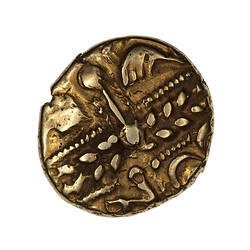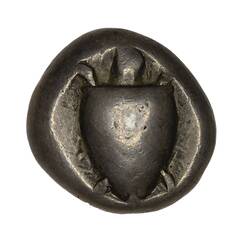Summary
Gold stater coin, Ancient Britain, 40-20 BC.
Issued by the Catuvellauni.
This coin is from a series termed British L. Celtic coins used in Britain and referred to by reference to their place of manufacture, 'Gallo-Belgic' coins were struck in what is today France and 'British' coins in Southern England. Letters A, B etc following the issue designator indicate the chronological order of production as determined by archaeological and coin hoard studies, A being earliest, B next and so on. This coin was struck in ancient Britain, by the Catavaulauni, after Julius Caesar's invasion around 40-30 BC.
This type of stater is also known as a Whaddon Chase stater after the great find in Buckinghamshire in 1849. That hoard contained over 226 examples including many varities. Prior to this discovery the type had been considered rare.
Obverse Description
Portions of a degraded bust, the main feature is a wreath of leaves running in two directions from the centre; the angles contain images believed to represent locks of hair and neck ornamentation.
Reverse Description
Horse to the right with a spoked wheel below and curved object above together with pellets in groups of three.
Edge Description
plain
More Information
-
Collecting Areas
-
Acquisition Information
Transfer from National Gallery of Victoria (NGV), Seaby, B.A. Ltd., 15 Mar 1976
-
Acknowledgement
Purchased, Felton Bequest, 1932
-
Date Issued
40-20 BC
-
Issued By
-
Denomination
-
Series
-
Material
Gold
-
Axis
11
-
Classification
-
Category
-
Discipline
-
Type of item
-
Overall Dimensions
3 mm (Height), 17 mm (Outside Diameter), 5.638 g (Weight)
-
Shape
Round
-
References
Mack 137 Evans C.9
[Book] Mack, R. P. 1975. The Coinage of Ancient Britain., p.73 No.137 Pages
[Book] Evans, John. 1864. The Coins of the Ancient Britons., C.9 Pages
-
Keywords
